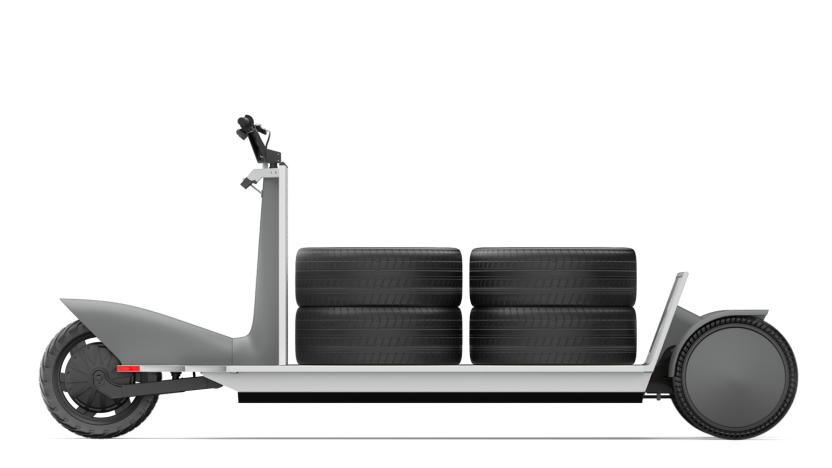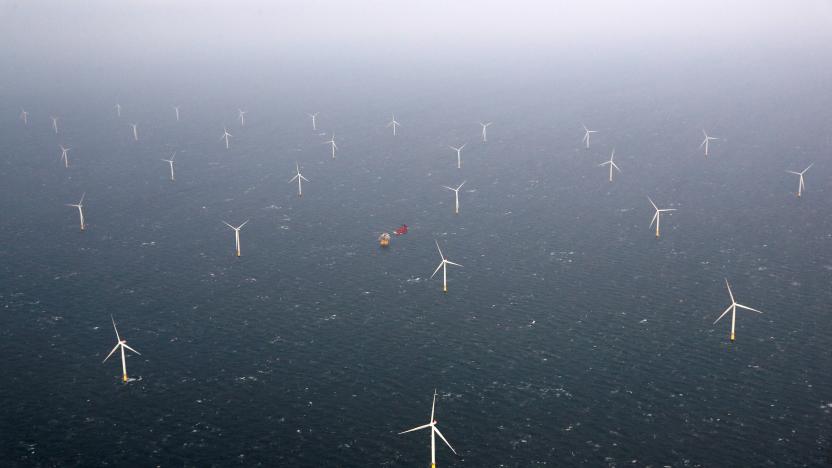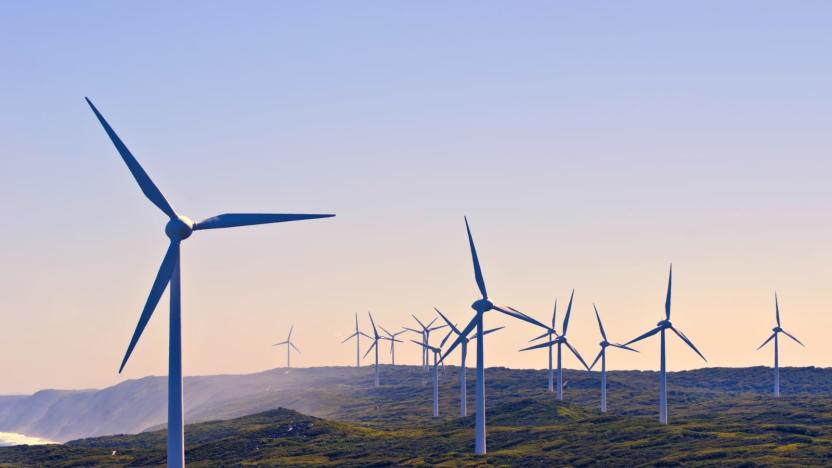Hydro
Latest

Polestar made a working version of its electric cargo sled
Polestar has revealed a working prototype of its Re:Move electric cargo sled, hinting at a future where these EVs replace delivery vans.

Europe created more energy from renewables than fossil fuels last year
Europe is slowly reducing its dependancy on fossil fuels. A report co-published by Ember and Agora Energiewende, two think tanks focused on clean energy, has revealed that the continent generated more electricity from renewables than fossil fuels in 2020.

America's renewable energy capacity overtakes coal for the first time
America's renewable energy capacity has overtaken coal for the first time ever. According to a report by the Federal Energy Regulatory Commission (FERC), the addition of new solar, wind and hydro capacity in the first four months of the year pushed renewable energy's share of total available installed capacity to 21.56%. Coal's share, meanwhile, has dropped to 21.55 percent, down from 23.04 percent last year.

Strong winds and clear skies help set UK renewable energy record
This week saw more milestones for renewable energy after the National Grid confirmed that power from green sources supplied more than half of UK energy for the first time. On Wednesday lunchtime, power from solar, wind, hydro and biomass accounted for 50.7 percent of energy production. In another UK first, nuclear, wind and solar each generated more electricity than coal and gas combined.

Mobile Miscellany: week of February 4th, 2013
If you didn't get enough mobile news during the week, not to worry, because we've opened the firehose for the truly hardcore. This week brought the arrival of Cricket's first waterproof smartphone and Three introduced an updated Galaxy S III known as the Ultrafast. Not to stop there, we'll take a trip to India to highlight the latest value-oriented smartphone. So buy the ticket and take the ride as we explore the "best of the rest" for this week of February 4th, 2013.

Kyocera Hydro hitting Boost on August 3rd for $130, lets you get your Ice Cream Sandwich soggy
It's summertime, time for absent-minded running through the sprinkers with your smartphone in your back pocket. Thankfully, if you can hold out for a few more weeks without having some prankster toss you in a pool at a party, you can pick up the new Kyocera Hydro on Boost Mobile on August 3rd for $130 -- just think of all of the money you'll save on dry rice after your handset takes an accidental dip. The 3.5-inch Ice Cream Sandwich phone sports a 1GHZ processor and can stand being under three feet of water for up to 30 minutes. Jump into the the press release after the break.

Kyocera Hydro bares all for the FCC
What's a spankin' new Android phone to do hot off its CTIA 2012 debut? Why, stop by the FCC for an inside-out coming out party. The Kyocera-crafted handset outlined in the docs looks to be the recently unveiled Hydro, as the device's model number -- C5170 -- matches that of the unit we got hands-on with in New Orleans. The filings don't spill much of the middleweight mobile's guts, but we were able to discern radios for CDMA 1900MHz, WiFi b/g/n and Bluetooth, as well as the existence of a 1,500mAh battery. We're still in the dark as to where this waterproofed, ICS-laden phone'll end up, but if our magic 8-ball's any indication, all signs point knowingly to Sprint. Hit up the source below to rifle through the RF tests for yourself.

Kyocera Hydro hands-on (video)
It's been a while since we've seen a Kyocera smartphone for the US market, and if you'll recall, its previous two attempts -- the Milano and Echo -- didn't manage to sway many consumers. Today, the company is adding two new Android handsets to the deck: the Hydro and Rise. True to its name, the Hydro plays off of Kyocera's experience in the waterproof segment, and while it's not mil-spec, the phone's able to withstand submersion at depths of up to one meter for a half-hour. The Hydro is a CDMA handset, although Kyocera is keeping the carrier affiliations -- and pricing -- close to its chest. As with the Rise, we'd expect to see it arrive on Sprint or one of its prepaid brands in the near future. The Hydro will ship with Ice Cream Sandwich, and we're pleased to report that the interface is largely unmolested, save for Kyocera's app to conserve battery life -- whether the carrier dictates future changes remains to be seen. Beyond the OS and the waterproof aspect, however, it's rather humdrum in the spec department. It features a Qualcomm MSM8655 SoC with a 1GHz CPU, a 3.5-inch, 480 x 320 display, a 3.2-megapixel camera with LED flash and a 1,500 mAh battery. Because the screen is an IPS LCD, the quality is definitely a step-above your run-of-the-mill TFT-LCD mainstays, although it's hard to ignore the low-res image quality. The Hydro also offers 512MB of RAM, 2GB of built-in storage and a 2GB microSD card. In terms of connectivity, you'll find 802.11n (WiFi), Bluetooth 2.1 + EDR and EV-DO Rev. A. The handset itself is comfortable to hold, though its plasticky build materials reinforce the fact that it's a low-end handset. While the Hydro doesn't blaze any new trails, it may very well be suitable for those on a budget who'd like a phone that can handle life's accidents. Follow the break for our hands-on video.

Russians working up non-lethal water jet guns
Yeah, using Avurt's IM-5 launcher and Taser International's C2 stun gun sure seem like more enjoyable ways to injure-but-not-kill the baddies, but there's a certain novelty attached to the vision of an uber-powerful Super Soaker. Apparently, a team of Russians are toying with the idea of crafting a non-lethal weapon based around "electro-hydrodynamical effects." In layman's terms, what we're looking at is a device that relies on water jets to bring down enemies whilst minimizing long-term damage, and while we're not up to speed on all the mathematics that prove this valid, it sounds pretty plausible. And hey, it's not like ammunition wouldn't be readily available in many parts of the world. [Warning: PDF read link][Via Wired, image courtesy of iSoaker]

China kicks Three Gorges Dam turbine generator into motion
The AP reports that China has flipped the switch on the first of 12 turbine generators on the right side of the ginormous Three Gorges Dam, with it apparently already pumping electricity to the national power grid after a 72-hour test run. The dam itself, as you're no doubt aware, is the world's biggest hydropower project evar, totaling up to some $22.5 billion. In addition to giving it something to brag about, China is hoping that the dam will let it cut its dependence on coal, as well as control flooding on the Yangtze river. This latest development follows the activation of 14 turbines on the left bank of the dam, which began operating in September of 2005.








